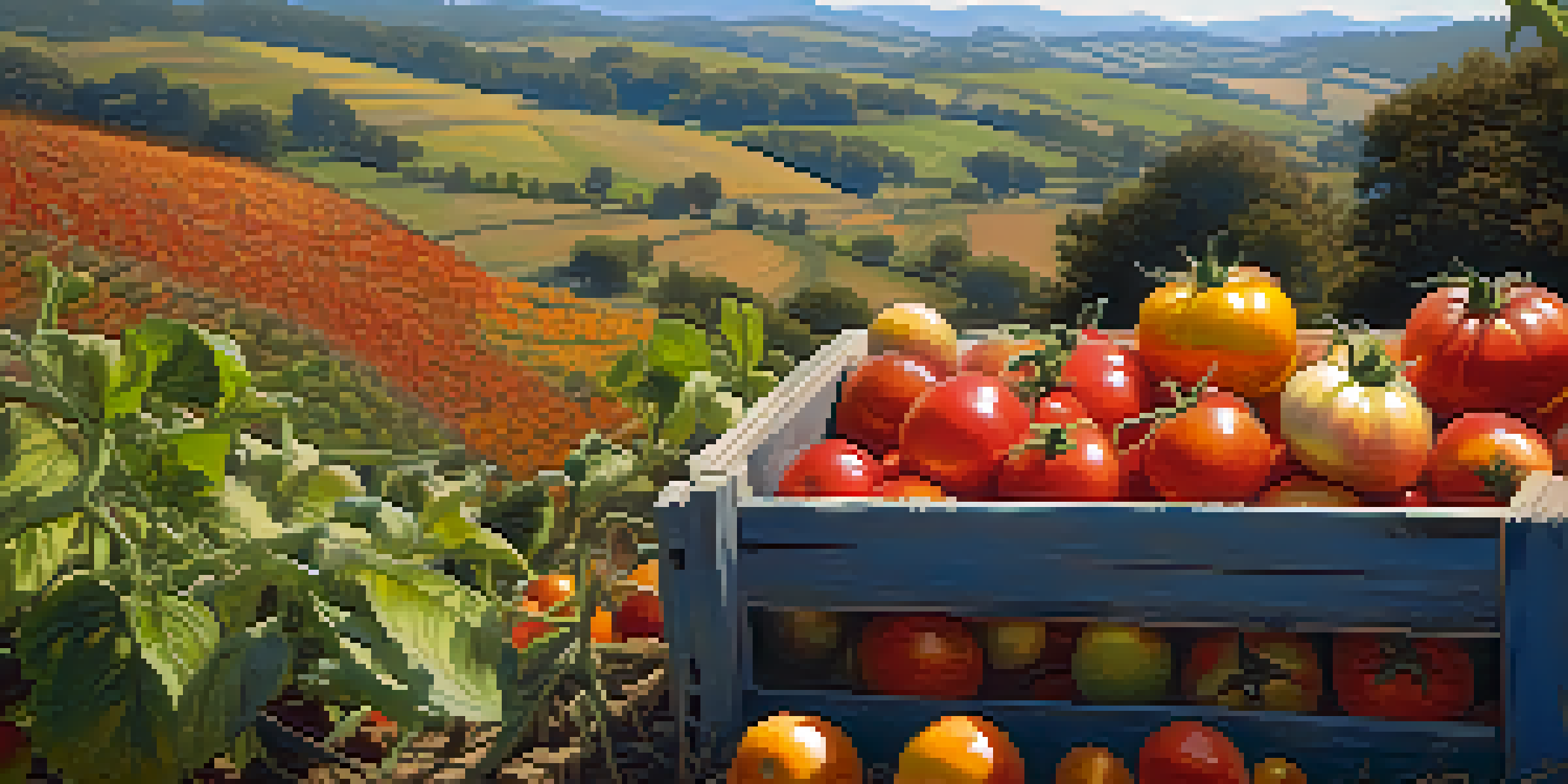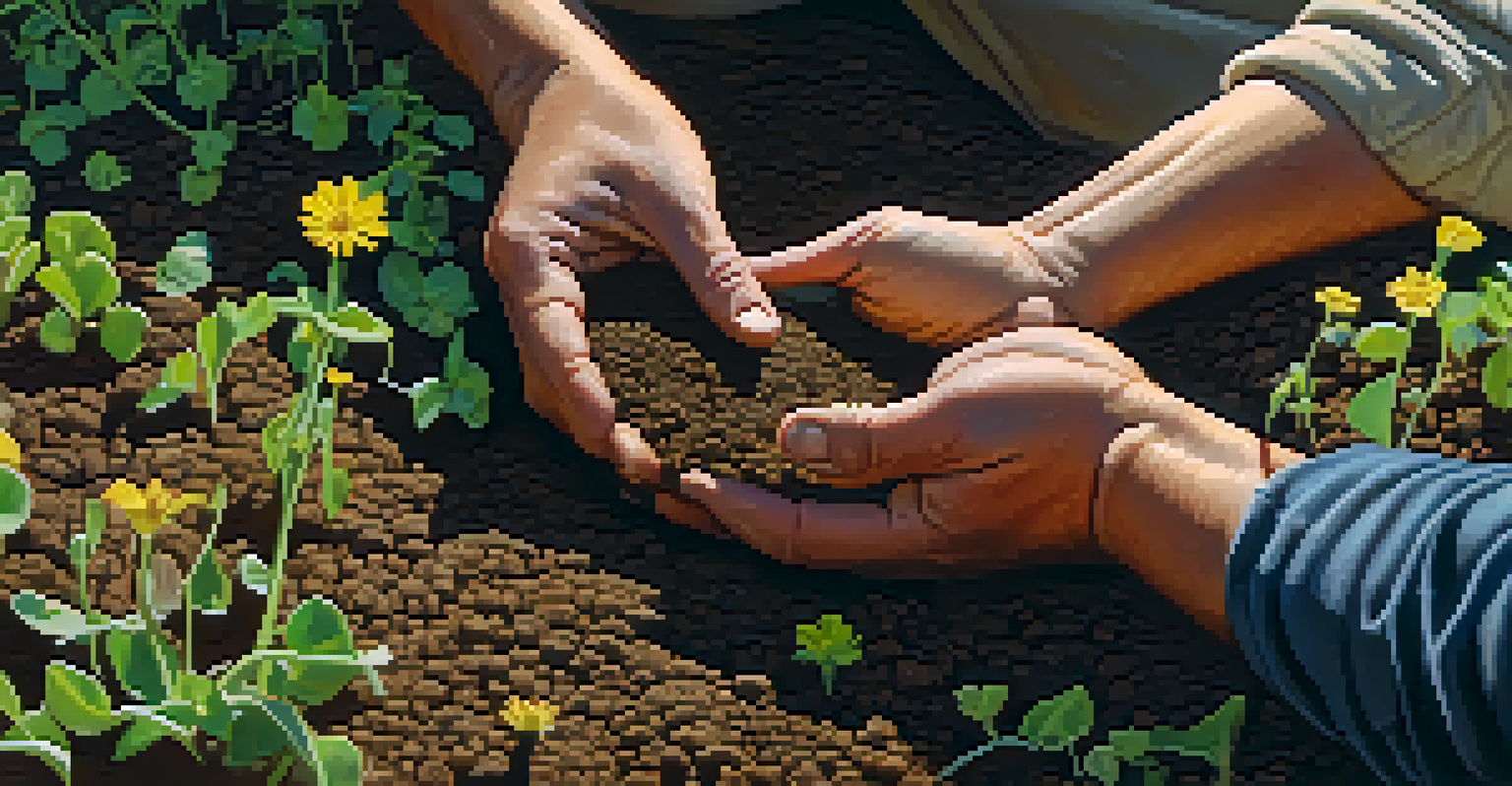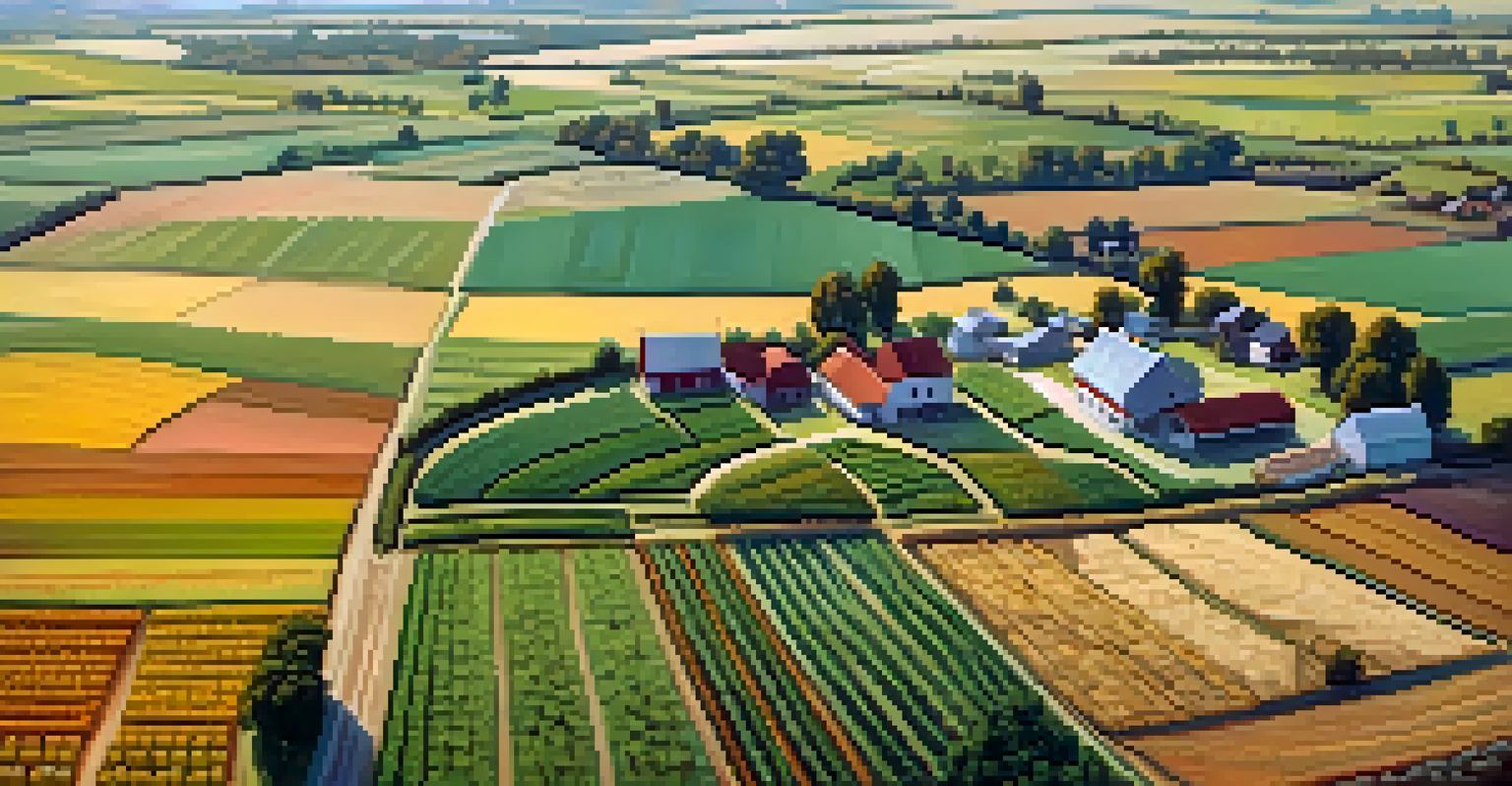The Role of Traditional Breeding in Sustainable Agriculture

Understanding Traditional Breeding and Its Practices
Traditional breeding is the process of selecting plants and animals with desirable traits to produce offspring that inherit those characteristics. This age-old technique has been practiced for thousands of years, long before the advent of modern genetic engineering. By focusing on natural traits, farmers have cultivated varieties that are well-adapted to their local environments and specific needs.
The preservation of biodiversity is essential for sustainable agriculture and food security.
One of the key aspects of traditional breeding is its reliance on natural genetic diversity. Farmers often select the best specimens from their crops and livestock to breed, ensuring that a wide range of traits can be preserved. This approach not only enhances food security but also contributes to the resilience of agricultural systems.
Furthermore, traditional breeding is often more accessible to small-scale farmers who may lack the resources for advanced technologies. By utilizing their knowledge of local ecosystems and specific crop needs, these farmers can develop varieties that thrive in their unique conditions, promoting sustainable practices rooted in community engagement.
Enhancing Crop Resilience Through Traditional Techniques
Resilience in agriculture is crucial for adapting to changing climate conditions and pest pressures. Traditional breeding plays a significant role in developing crop varieties that can withstand these challenges. For instance, farmers have traditionally selected for drought-resistant traits in crops, ensuring that their yields remain stable even during dry spells.

Moreover, traditional breeding can help in creating plants that are more resistant to diseases. By selecting the healthiest plants over generations, farmers can cultivate varieties that are less susceptible to common agricultural diseases. This not only reduces the need for chemical pesticides but also promotes healthier ecosystems.
Traditional Breeding Enhances Resilience
By selecting for traits like drought resistance, traditional breeding creates crop varieties that can adapt to climate change and pest pressures.
An example of this can be seen in the development of heirloom varieties, which often possess unique traits that allow them to thrive in specific environments. These varieties are not only resilient but also contribute to biodiversity, an essential component of sustainable agriculture.
The Role of Biodiversity in Sustainable Agriculture
Biodiversity is the backbone of sustainable agriculture, and traditional breeding contributes significantly to maintaining it. By cultivating a variety of crops and livestock, farmers can ensure that their systems are not overly reliant on a single species or strain. This diversity helps mitigate risks associated with pests, diseases, and climate change.
Traditional farming practices are not just about growing food; they are essential for maintaining our cultural heritage and biodiversity.
Traditional breeding practices often lead to the preservation of local varieties that might otherwise disappear. These indigenous crops and breeds often possess unique traits, such as drought tolerance or nutritional benefits, that can be invaluable in a warming world. Protecting this biodiversity is crucial for ensuring food security for future generations.
Additionally, by promoting biodiversity through traditional methods, farmers can create a more balanced ecosystem. This balance can enhance soil health, improve water retention, and support a variety of beneficial insects and wildlife, all of which contribute to a more sustainable agricultural landscape.
Traditional Breeding and Local Economies
Traditional breeding not only supports sustainable agriculture but also strengthens local economies. When farmers utilize locally bred varieties, they often see improved yields and reduced input costs. This can lead to increased profitability, allowing them to reinvest in their farms and communities.
Moreover, by focusing on local breeds and crops, farmers can cater to regional markets and demand, creating niche products that can command higher prices. For example, heirloom tomatoes grown in a specific region can attract culinary enthusiasts and health-conscious consumers, boosting local agricultural economies.
Biodiversity Supports Sustainable Farming
Maintaining a diverse range of crops and livestock through traditional breeding mitigates risks and strengthens ecosystems.
Additionally, traditional breeding practices encourage community collaboration. Farmers often share seeds and knowledge, fostering a sense of community and mutual support. This collaboration can lead to the development of more resilient agricultural practices that benefit both the environment and the economy.
Challenges Facing Traditional Breeding Today
Despite its many benefits, traditional breeding faces challenges in the modern agricultural landscape. One significant issue is the increasing dominance of industrial agriculture, which often prioritizes high-yield monocultures over biodiversity. This trend can overshadow the importance of traditional practices and threaten the survival of locally adapted varieties.
Another challenge is the loss of traditional knowledge as younger generations move away from farming. As urbanization continues, the skills and practices associated with traditional breeding may be lost, resulting in a decline in agricultural diversity. This loss can have long-term consequences for food security and ecosystem health.
Furthermore, access to resources and support for small-scale farmers can be limited. Without proper funding and education, many farmers may struggle to implement traditional breeding practices effectively. Addressing these challenges is essential to ensure the continued relevance and success of traditional breeding in sustainable agriculture.
Integrating Traditional Breeding with Modern Techniques
The future of sustainable agriculture may lie in integrating traditional breeding methods with modern scientific advancements. By combining the strengths of both approaches, farmers can develop resilient crop varieties that meet contemporary challenges while preserving biodiversity. This hybrid approach allows for the exploration of new traits while staying rooted in traditional practices.
For example, researchers can use modern genetic tools to identify desirable traits in traditional varieties, speeding up the breeding process without sacrificing the genetic diversity inherent in these crops. This collaboration can lead to the development of new varieties that are better suited for changing climates and pest pressures.
Local Economies Benefit from Tradition
Utilizing locally bred varieties not only improves yields for farmers but also boosts regional markets and fosters community collaboration.
Additionally, education and support for farmers on both traditional and modern techniques can empower them to make informed decisions. By understanding the benefits of both methods, farmers can choose the best practices for their unique situations, ensuring a sustainable and productive future for agriculture.
The Future of Traditional Breeding in Sustainable Agriculture
Looking ahead, the role of traditional breeding in sustainable agriculture is more critical than ever. As the world faces climate change, food insecurity, and biodiversity loss, traditional practices offer viable solutions that promote resilience and sustainability. By preserving and enhancing traditional breeding methods, we can create a more sustainable agricultural future.
Moreover, increased awareness and appreciation for local varieties can drive consumer demand, supporting farmers who utilize traditional breeding techniques. This consumer interest can lead to policies and initiatives that protect and promote biodiversity in agriculture, ensuring these practices thrive.

Ultimately, the future of sustainable agriculture will likely depend on a balanced approach that respects traditional knowledge while embracing innovation. By valuing the past and investing in the future, we can cultivate a food system that is not only productive but also sustainable and equitable for generations to come.